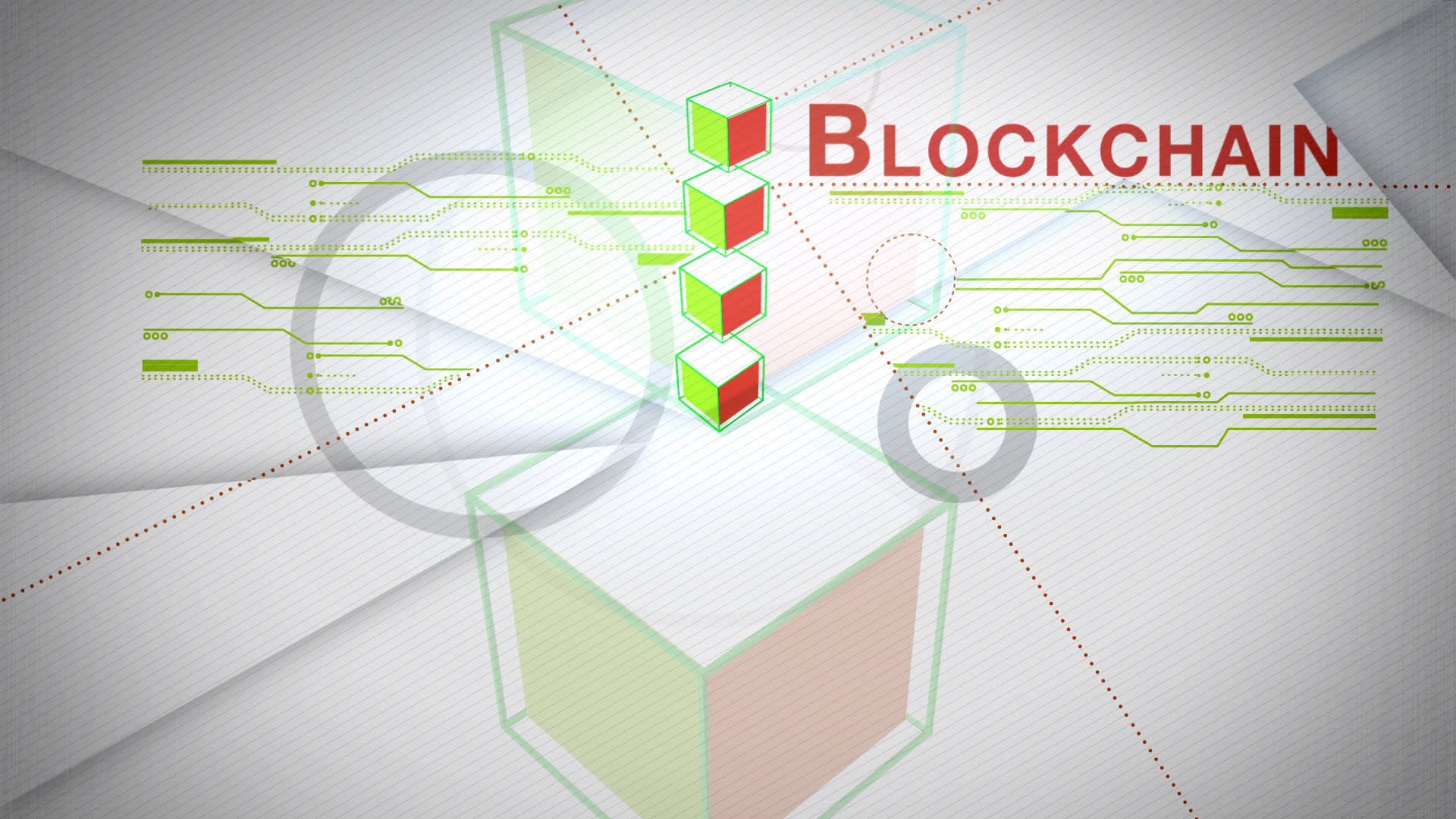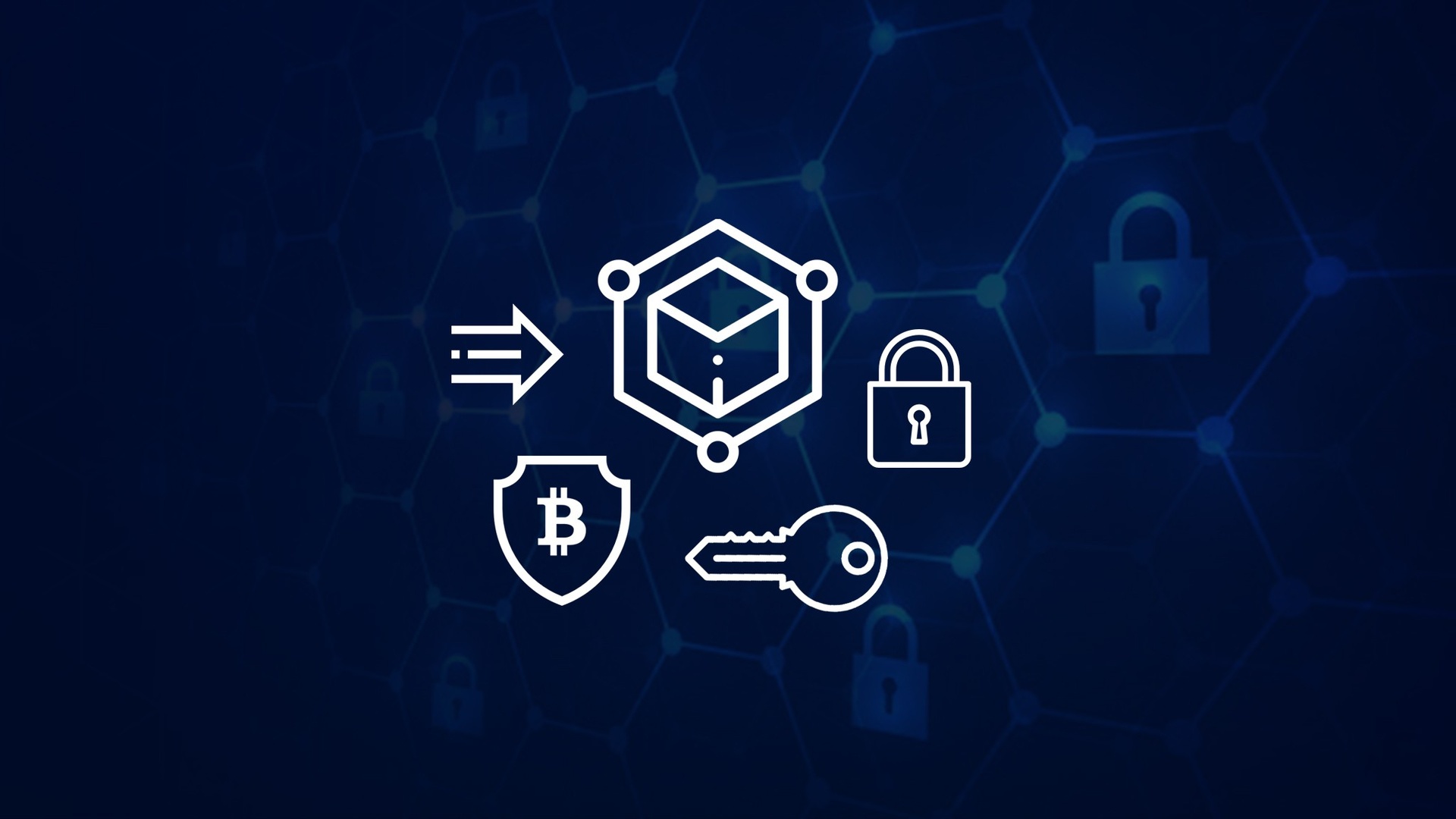Introduction
Welcome to the world of blockchain, a revolutionary technology that has captured the attention of industries and individuals alike. At the heart of blockchain lies the concept of a distributed ledger, a decentralized database that records and stores transactions in a transparent and immutable manner. But have you ever wondered where exactly this blockchain ledger is stored?
Before we dive into the specifics, let’s briefly understand what a blockchain ledger is. In simple terms, a blockchain ledger is a digital record containing a chronological series of transactions or data. It is designed to be tamper-proof, ensuring the integrity and security of the stored information. This ledger powers various blockchain applications, such as cryptocurrencies, supply chain management, and smart contracts.
Now, onto the burning question: where does the blockchain ledger reside?
The storage of the blockchain ledger depends on the type of blockchain network, whether it is public or permissioned. In a public blockchain, such as Bitcoin or Ethereum, the ledger is stored and maintained by participating nodes spread across the network. In contrast, a permissioned blockchain restricts access to the ledger, and only authorized participants or nodes are responsible for storing and validating the transactions.
There are several storage options for blockchain ledgers, including cloud storage, distributed storage, and local storage. Let’s explore each of these options in more detail below.
What is the Blockchain Ledger?
Before we delve into where the blockchain ledger is stored, let’s first understand what exactly it is. The blockchain ledger is a foundational component of blockchain technology that enables the secure and transparent recording of transactions or data. It serves as a decentralized and immutable database, ensuring trust and consensus within the network.
The blockchain ledger consists of a series of blocks, with each block containing a set of transactions or data. These blocks are linked together using cryptographic hashes, forming a chain of interconnected information. It is this structure that provides the integrity and immutability of the ledger.
One key feature of the blockchain ledger is its decentralized nature. Unlike traditional centralized databases that are controlled by a single authority, the blockchain ledger is distributed across multiple nodes or computers within the network. Each participating node maintains a copy of the ledger and validates transactions to ensure their accuracy and legitimacy.
Another crucial aspect of the blockchain ledger is its immutability. Once a block is added to the chain, it becomes virtually impossible to alter or delete the information contained within it. This immutability is achieved through cryptographic hashing, where each block is assigned a unique identifier or hash. Any changes made to the data within a block would also modify its hash, alerting the network to the tampering attempt.
The blockchain ledger’s transparency is another key characteristic. As a public ledger, it allows anyone on the network to view and verify the recorded transactions. This transparency fosters trust and accountability, as participants can independently verify the validity of the information stored within the ledger.
Additionally, the blockchain ledger operates on a consensus mechanism, ensuring that all participants agree on the validity of transactions. Consensus algorithms, such as Proof of Work (PoW) or Proof of Stake (PoS), are utilized to validate and authenticate transactions before they are added to the ledger. This consensus mechanism ensures the integrity and security of the blockchain network.
Overall, the blockchain ledger encapsulates the fundamental principles of transparency, decentralization, immutability, and consensus that underpin blockchain technology. It serves as the backbone of various applications, facilitating secure and efficient transactions without the need for intermediaries.
Now that we have a solid understanding of what the blockchain ledger is, let’s explore the various options for storing this critical component of blockchain technology.
Where is the Blockchain Ledger Stored?
When it comes to storing the blockchain ledger, the location depends on the type of blockchain network being used. Public and permissioned blockchains have different approaches to ledger storage.
In a public blockchain, such as Bitcoin or Ethereum, the ledger is distributed and stored across a network of participating nodes. Each node maintains a copy of the entire blockchain ledger, ensuring redundancy and preventing a single point of failure. Transactions are validated by miners, and once consensus is reached, the approved transactions are added to the ledger. This decentralized storage model ensures the security, transparency, and trustworthiness of the network.
On the other hand, permissioned blockchains operate with a more controlled approach to ledger storage. In these networks, access to the ledger is restricted, and only authorized participants have the ability to store and validate transactions. The nodes responsible for ledger storage are typically pre-selected, ensuring a higher level of trust and security compared to public blockchains.
The storage infrastructure for the blockchain ledger can take several forms, including cloud storage, distributed storage, and local storage.
Cloud Storage:
Cloud storage is a popular option for storing blockchain ledgers due to its scalability, flexibility, and accessibility. Cloud service providers offer secure and reliable storage solutions that can accommodate the growing size of the blockchain ledger. This approach eliminates the need for individual organizations or nodes to manage their own storage infrastructure, reducing costs and complexity.
Distributed Storage:
Distributed storage involves breaking down the blockchain ledger into smaller fragments or shards and distributing them across multiple nodes. This approach enhances the security and resilience of the ledger, as no single node holds the entire dataset. Additionally, distributed storage can improve performance by allowing parallel access to the ledger, enabling faster transaction processing.
Local Storage:
Local storage refers to the practice of storing the blockchain ledger on dedicated hardware devices or servers owned by individual participants or organizations. This approach provides full control and ownership over the storage infrastructure, ensuring data privacy and security. However, local storage may require substantial upfront investment and ongoing maintenance.
Ultimately, the choice of storage method for the blockchain ledger depends on factors such as the type of blockchain network, the specific use case, and the level of trust and security required. Each approach has its advantages and trade-offs, and organizations must carefully consider their specific needs when determining the most suitable storage solution for their blockchain ledger.
Now that we understand the different storage options, let’s delve deeper into the implications of ledger storage on the security and decentralization of blockchain networks.
Storage Options for Blockchain Ledgers
When it comes to storing blockchain ledgers, there are several options available, each with its own advantages and considerations. Let’s explore the different storage options for blockchain ledgers:
Cloud Storage:
Cloud storage has gained popularity due to its scalability, cost-effectiveness, and ease of use. By utilizing the infrastructure of cloud service providers, organizations can store their blockchain ledgers in a secure and accessible manner. Cloud storage offers the advantage of offloading the responsibility of managing hardware and infrastructure to the service provider, allowing organizations to focus on their core activities.
Distributed Storage:
In distributed storage, the blockchain ledger is divided into smaller segments or shards, which are then stored across multiple nodes within the network. This approach enhances security and resilience, as no single node holds the entire ledger, minimizing the impact of a single point of failure. Distributed storage also enables parallel access to the ledger, improving performance and scalability. However, managing the distribution and synchronization of the ledger across nodes can be complex and requires careful coordination.
Local Storage:
Local storage involves storing the blockchain ledger on dedicated hardware devices or servers owned by individual participants or organizations. This approach provides full control and ownership over the storage infrastructure, ensuring data privacy and security. Local storage is particularly suitable for organizations with specific compliance requirements or sensitive data that needs to be maintained within their premises. However, local storage can be costly to set up and maintain, requiring hardware investments and ongoing maintenance.
It’s worth noting that organizations can also opt for a hybrid storage approach, combining different storage options based on their specific needs. For example, they may choose to store a portion of the ledger in the cloud for ease of access and scalability, while keeping sensitive or critical data stored locally for enhanced security.
When deciding on the appropriate storage option for a blockchain ledger, organizations should consider factors such as their budget, security requirements, scalability needs, regulatory compliance, and performance considerations. Additionally, the type of blockchain network (public or permissioned) and the size of the ledger should also be taken into account.
Now that we’ve explored the various storage options for blockchain ledgers, let’s dive into the differences between public and permissioned blockchains and their implications for ledger storage.
Cloud Storage
Cloud storage has emerged as a popular option for storing blockchain ledgers due to its scalability, flexibility, and cost-effectiveness. With cloud storage, organizations can leverage the infrastructure provided by third-party service providers to securely store and manage their blockchain ledgers.
One of the key advantages of cloud storage is its scalability. Cloud service providers offer virtually unlimited storage capacity, allowing organizations to easily accommodate the growing size of their blockchain ledgers without the need for additional hardware investments or infrastructure upgrades. As the volume of transactions on the blockchain increases, cloud storage can seamlessly expand to meet the demands, ensuring the uninterrupted operation of the network.
Flexibility is another major benefit of cloud storage. With cloud-based solutions, organizations have the freedom to choose the storage configurations that best suit their needs. They can opt for different levels of performance and redundancy options based on their specific requirements. Additionally, cloud storage can be easily integrated with other cloud-based services, enabling seamless data management and analysis.
In terms of cost, cloud storage offers a pay-as-you-go model, where organizations only pay for the storage capacity they actually use. This eliminates the need for large upfront investments in hardware and infrastructure. Moreover, cloud service providers handle the maintenance and management of the storage infrastructure, reducing the burden on organizations and allowing them to focus on their core business activities.
Security is a critical concern for blockchain ledgers, and cloud storage providers have implemented robust security measures to protect data from unauthorized access and tampering. They typically employ encryption techniques to ensure the confidentiality and integrity of the stored ledger. Furthermore, cloud service providers have stringent security protocols and regulatory compliance measures in place to meet the high standards expected in the industry.
However, there are also factors to consider when opting for cloud storage. One of the main concerns is data privacy and control. Storing the blockchain ledger on a cloud service means entrusting the data to a third party. Organizations need to carefully evaluate the privacy policies and terms of service of the cloud provider to ensure compliance with their specific requirements and regulatory obligations.
Another consideration is the reliance on an external provider. While cloud storage offers numerous benefits, organizations must consider how dependent they become on the service provider. Downtime or service disruptions at the cloud provider’s end can impact the availability of the blockchain ledger and, subsequently, the operations of the network. Organizations should conduct thorough due diligence and choose reputable and reliable cloud service providers to mitigate these risks.
Overall, cloud storage presents a convenient and cost-effective option for storing blockchain ledgers. Its scalability, flexibility, and security features make it an attractive choice for organizations looking to leverage the benefits of cloud computing while ensuring the secure and efficient management of their blockchain data.
Distributed Storage
Distributed storage is a storage method that involves breaking down the blockchain ledger into smaller fragments or shards and distributing them across multiple nodes within the blockchain network. Unlike traditional centralized storage systems, where all data is stored in a single location, distributed storage offers several advantages in terms of security, resilience, and performance.
One of the key benefits of distributed storage is enhanced security. By breaking the blockchain ledger into smaller fragments and distributing them across multiple nodes, the risk of a single point of failure is significantly reduced. Even if one or more nodes experience a failure or malicious activity, the other nodes in the network still hold copies of the ledger, ensuring the integrity and availability of the data.
Resilience is another advantage of distributed storage. In the event of a node failure or network disruption, the other nodes can continue to operate and maintain the blockchain ledger. This decentralized approach to storage minimizes the impact of localized issues and ensures the continuity of the network. Additionally, distributed storage provides protection against data loss, as the ledger is replicated across multiple nodes.
Performance is also improved with distributed storage. By fragmenting the blockchain ledger and distributing it across multiple nodes, parallel access to the ledger becomes possible. This allows for faster processing of transactions, as multiple nodes can concurrently validate and update different parts of the ledger. It also enables the network to handle a higher volume of transactions, supporting scalability as the blockchain grows.
However, distributed storage also presents some challenges. Synchronization of the distributed ledger across multiple nodes requires careful coordination and communication. Changes made to the ledger on one node must be propagated and synchronized with the other nodes to ensure consistency. This necessitates robust consensus algorithms and communication protocols to facilitate the synchronization process.
An additional consideration is the overhead and complexity of managing distributed storage. As the number of nodes in the network increases, so does the complexity of maintaining and managing the fragmented blockchain ledger. Organizations must invest in robust infrastructure and coordination mechanisms to ensure the smooth operation of the distributed storage system.
Despite the challenges, distributed storage offers significant benefits for blockchain ledgers. Its decentralized nature provides greater security, resilience, and performance compared to traditional centralized storage systems. As blockchain networks continue to grow and expand, distributed storage will play a crucial role in ensuring the integrity and availability of the ledger across the network.
Local Storage
Local storage is a method of storing the blockchain ledger on dedicated hardware devices or servers owned and controlled by individual participants or organizations. This approach provides organizations with full ownership, control, and physical access over the storage infrastructure, offering certain advantages and considerations.
One of the main benefits of local storage is enhanced data privacy and security. By storing the blockchain ledger within their premises, organizations can have greater control over who has access to the data. This is particularly important for industries that handle sensitive information, such as healthcare or finance, where regulatory compliance and data protection are of utmost importance. Local storage allows organizations to implement stringent security measures tailored to their specific needs, providing an additional layer of protection against potential breaches.
Moreover, local storage eliminates the reliance on external service providers or third parties. Organizations are not subject to the terms and conditions of cloud providers and have complete control over the storage infrastructure. This can be advantageous for organizations that prioritize data sovereignty and want to maintain complete ownership of their blockchain ledger.
However, local storage also comes with certain challenges. One major consideration is the upfront cost and ongoing maintenance required. Organizations need to invest in dedicated hardware and infrastructure, including servers, network equipment, and backup systems. Additionally, ongoing maintenance and updates are necessary to ensure the smooth operation and security of the local storage infrastructure.
Scalability is another concern with local storage. As the blockchain ledger grows in size, organizations need to carefully plan and allocate sufficient storage capacity to accommodate the expanding dataset. This may require regular hardware upgrades or additions, increasing the associated costs and potential complexity.
Furthermore, local storage does not offer the same level of flexibility and accessibility as cloud storage. With local storage, access to the blockchain ledger is limited to the physical location where the storage infrastructure is located. This may pose challenges for organizations with distributed teams or for those that require remote access to the ledger from multiple locations.
Ultimately, the decision to opt for local storage depends on the specific needs and preferences of the organization. It is suitable for organizations that prioritize data privacy, security, and control over their blockchain ledger. However, it requires careful planning, investment, and ongoing maintenance to ensure the reliable and secure operation of the local storage infrastructure.
As blockchain technology continues to evolve, hybrid approaches that combine both cloud and local storage may offer a viable solution. This allows organizations to leverage the benefits of both approaches, such as the scalability and accessibility of cloud storage, along with the data control and security offered by local storage.
Public vs. Permissioned Blockchains
When it comes to blockchain technology, there are two primary types of blockchain networks: public and permissioned. Each type has its own characteristics and implications for the storage and maintenance of the blockchain ledger.
Public Blockchains:
In a public blockchain, such as Bitcoin or Ethereum, the blockchain ledger is open to anyone who wants to participate in the network. Anyone can join the network, validate transactions, and store a copy of the ledger. The ledger is distributed across a network of nodes, where each node maintains a full copy of the ledger.
Public blockchains have several advantages. They offer a high level of transparency, as anyone can view the ledger and verify the transactions. This transparency fosters trust and accountability within the network. Additionally, public blockchains are highly decentralized, with no central authority having control over the ledger. This ensures the immutability and integrity of the data stored in the ledger.
However, public blockchains also present some challenges in terms of storage. Because the ledger is open to anyone, the size of the ledger can grow significantly over time. This requires a significant storage infrastructure to accommodate the growing dataset. Additionally, the distributed nature of the ledger means that each participating node must store a complete copy of the ledger, which can be resource-intensive.
Permissioned Blockchains:
In contrast, permissioned blockchains restrict access to the network and the blockchain ledger. Only authorized participants or nodes are allowed to join and validate transactions. Permissioned blockchains are commonly used in enterprise settings, where certain participants require more control and privacy over their data.
Permissioned blockchains offer advantages in terms of privacy and security. By restricting access to authorized participants, organizations can ensure that sensitive information is only accessible to authorized individuals. Additionally, permissioned blockchains typically have a smaller number of nodes that collectively validate and store the ledger, reducing the storage requirements compared to public blockchains.
However, permissioned blockchains may sacrifice some decentralization and transparency compared to public blockchains. The control over the network and the ledger lies in the hands of a select group of participants, which can introduce a certain level of centralization. Organizations must carefully consider the trade-offs between privacy, control, and decentralization when choosing a permissioned blockchain.
The storage of the blockchain ledger in permissioned blockchains can vary. Some organizations may choose to store the entire ledger locally, while others may opt for distributed storage among the authorized nodes. The choice depends on the specific requirements and preferences of the organization.
In summary, public blockchains offer a highly transparent and decentralized ledger but require a significant storage infrastructure to accommodate the large and growing dataset. Permissioned blockchains, on the other hand, provide greater privacy and control but must carefully balance the trade-offs between centralization and decentralization. The storage options for each type of blockchain depend on the specific needs and considerations of the organization or network.
Impact of Blockchain Ledger Storage on Security and Decentralization
The storage of the blockchain ledger has a significant impact on the security and decentralization of a blockchain network. The chosen storage method directly influences the integrity, availability, and control of the blockchain ledger, which are crucial for the overall security and decentralization of the network.
Security:
The security of the blockchain ledger is paramount. The storage method employed must ensure the confidentiality, integrity, and availability of the data. A compromised ledger can lead to inaccurate or fraudulent transactions, undermining the trust and reliability of the blockchain network.
When considering security, distributed storage offers advantages. By spreading the ledger across multiple nodes, distributed storage enhances security by reducing the risk of a single point of failure or malicious attack. Even if a node is compromised, the ledger remains intact on other nodes, maintaining the integrity and immutability of the data.
Cloud storage can also provide robust security measures, such as encryption and access controls, to protect the blockchain ledger. However, organizations need to carefully evaluate the security protocols and compliance measures implemented by cloud service providers to ensure the protection of their data.
Local storage, while providing organizations with greater control and ownership over their data, requires diligent implementation of security measures. Organizations must establish appropriate access controls, monitoring systems, and backup procedures to mitigate the risk of unauthorized access or data loss.
Decentralization:
The decentralization of the blockchain network is a critical aspect that contributes to its overall security and resilience. Decentralization ensures that no single entity or authority has control over the ledger, enhancing trust and removing the dependency on a central point of failure.
In public blockchains, where decentralization is highly valued, the storage of the ledger across a network of participating nodes reinforces this principle. Each node holds a copy of the entire ledger, eliminating the need for a central authority to manage and control the data. This decentralized storage approach strengthens the overall security and trustworthiness of the network.
Permissioned blockchains may have a more controlled and centralized approach to storage, with a select group of authorized nodes responsible for maintaining the ledger. While this may provide certain benefits, such as increased privacy and efficiency, it introduces a certain level of centralization that should be carefully managed and monitored to safeguard against potential vulnerabilities.
The storage method chosen for the blockchain ledger has major implications for the security and decentralization of the network. Organizations must carefully weigh the advantages and trade-offs of different storage options, considering factors such as scalability, privacy, control, and the specific requirements of their use case.
By prioritizing secure and decentralized storage mechanisms, organizations can ensure the integrity, availability, and trustworthiness of the blockchain ledger, contributing to the overall resilience and success of the blockchain network.
Conclusion
The storage of the blockchain ledger plays a crucial role in the security, decentralization, and overall success of a blockchain network. Different storage options, such as cloud storage, distributed storage, and local storage, offer unique advantages and considerations for organizations seeking to store their blockchain ledgers.
Cloud storage provides scalability, flexibility, and cost-effectiveness, allowing organizations to easily accommodate the growing size of blockchain ledgers. It also offers robust security measures and accessibility, making it a popular choice for many blockchain applications.
Distributed storage enhances security and resilience by fragmenting the ledger and distributing it across multiple nodes. This approach minimizes the risk of a single point of failure and improves performance through parallel access to the ledger. However, managing the synchronization and coordination of distributed storage can pose challenges.
Local storage gives organizations full control, ownership, and privacy over their blockchain ledgers. It offers enhanced data security and compliance, particularly for industries with strict regulatory requirements. However, local storage requires significant upfront investment and ongoing maintenance.
The choice of storage option for the blockchain ledger depends on factors such as the type of blockchain network, specific use case, scalability needs, and security considerations. Organizations may also opt for hybrid storage approaches that combine different storage options to leverage the benefits of each method.
Additionally, it is crucial to consider the implications of storage on the security and decentralization of the network. The storage method should ensure the integrity, availability, and control of the blockchain ledger. Distributed storage enhances security and decentralization by spreading the ledger across nodes, while cloud and local storage have their own respective benefits and considerations.
Ultimately, the storage of the blockchain ledger should be thoughtfully chosen to align with the organization’s requirements, compliance needs, and the specific characteristics of the blockchain network. By selecting the appropriate storage option, organizations can ensure the security, decentralization, and longevity of their blockchain deployments, paving the way for the realization of blockchain’s potential in various industries.

























